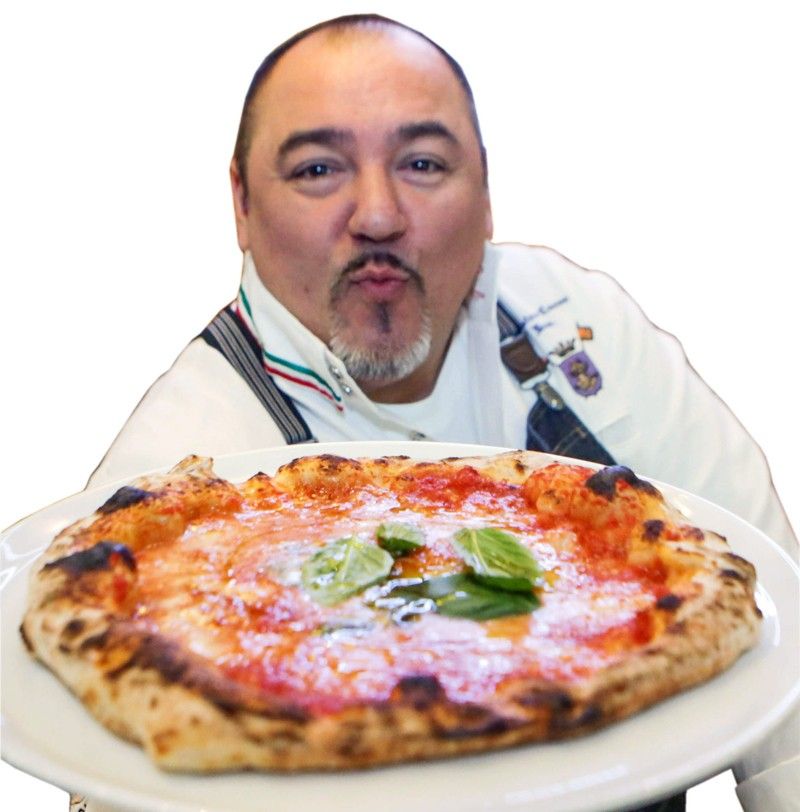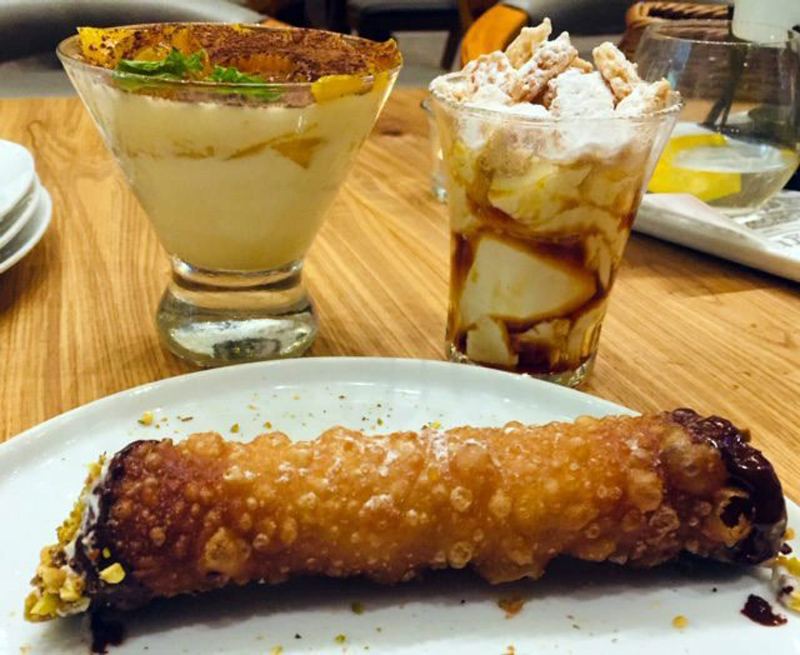Salvatore Cuomo brings the art of the ‘Pizzaiolo’ to his café

Italian-Japanese chef Salvatore Cuomo, whose new eponymous café just opened at the ground floor of The Podium, has some pretty clear ideas about what links the cuisine of his two nationalities — the same hands-on perfectionism that exists in both a sushi chef and a Neapolitan pizzaiolo (pizza master).
“You think about it: it’s the food directly from my hands to your mouth. So, as fresh as possible,” Cuomo says, gesturing as though kneading pizza dough, then placing that invisible bite towards my mouth. “If I did that, you look at me and say, ‘What are you doing, man?’ But if I make the pizza with my hands, or make the sushi right in front of you with my hands, you have an energy in that kind of food from someone; you have to trust them.”
Chef Cuomo, who has 77 restaurants named after him throughout Japan, Korea, New Zealand, Italy and now his second in Manila (after Salvatore Cuomo & Bar, a more fine-dining branch, opened at BGC two years ago), is himself a unique mix. Born in Naples to an Italian father and Japanese mother, he learned his father’s pizza-making skills since age nine. In Naples, there’s a vast difference between “pizza-maker” — the person who slides the dough in the oven — and a pizzaiolo. That’s the one who kneads the dough, makes sure it’s properly oxygenated before spreading it, adding olive oil and fresh ingredients and carefully heating it. The distinction is enough that UNESCO has named the pizzaiolo and his skills an “Intangible Cultural Heritage of Humanity.” More personal than farm-to-market, this is hand-to-mouth food. And a world treasure.
Cuomo is an affable host at his new branch, designed by Milanese architect Tomaso Piantini with earthy touches, like the trees in the center, the wood and brick lining the walls and the bed of planted grass lining the entrance. The chef says he wanted it to “have a more natural touch” than the BGC branch, which was designed by a Japanese firm with a sharper, more modern ambience. BGC is the place to go for perfect wagyu beef, while Salvatore Cuomo Café is a more casual, cozy concept with homey favorites.

The pintxos Napolitano appetizer platter features fresh bruschetta with cherry tomatoes, fried zepolle and mozzarella balls, fresh prosciutto
The menu reflects this, with signature Cuomo dishes like his porchetta (homemade roasted pork), spaghetti aglio e olio (tomatoes, herbs and olive oil bursting with freshness) and the Margherita pizza, a wonder of thin crust with a bed of cheese, tomato sauce, herbs and a crust that expresses buttery sunshine in every bite.
Chef Cuomo goes from table to table, encouraging guests to try more, more, more. Or he stands behind the front prep counter, laying out fresh dough, spreading it with tomato sauce, before handing it off to his own trained pizzaiolo.
A sentimental favorite for the chef on this menu is his pan pizza. “In my house, my grandma would make this type of a pan pizza and cook it inside the oven. But it’s been slowly changed in the United States.”
Those who know Chicago deep-pan pizza have experienced a certain style of this dish; Cuomo’s eggplant parmigiana pan pizza is more authentic to Naples, with a thick crust that uses pork fat from lechon in the dough.
Lechon in Naples? Oh, yes. “In Naples, we were also under the Spanish for a long time,” he says, “so even in our city we have lechon, the pork fats. So when we start to cook all these ingredients from the history of two countries, we find out this type of pizza. It is not something that was made for this market, the Philippines. We don’t research, ‘Okay, this type of customer likes this type of food.’ Instead, we bring back this type of recipe. Also, it was one of my favorites when I was a kid, to have it inside of the dough.”
Another key is the freshness of his ingredients — a challenge in the Philippines until he found a Japanese supplier, Benguet-based Diamond Star Agro, which grows produce in Baguio using Japanese and Korean seeds. So tomatoes, zucchini, eggplant and other produce are a hybrid of Japanese quality and Baguio growing conditions. Herbs, though, need to be freshly imported (“They haven’t got that down yet,” he says). And Cuomo is very picky about growing tomatoes: “There are many tricks they have, like if you plant at the right altitude, right temperature, you don’t need pesticides. People like to use a lot of water but with tomato you don’t need so much water, it’s the air. The more stress you put on the tomatoes, the less sweet it will be.”

Sweet side: Sicilian pistachio cannoli, mango tiramisu and panna cotta are authentic sweet treats.
A perfect example of how all this comes together is the pintxos Napolitano, a mixed appetizer platter that, as its name suggests, has Spanish influence: bruschetta with cherry tomatoes, fried zepolle with octopus inside rather than seaweed, fried mozzarella balls and fresh prosciutto. It’s deliciously appetizing.
For dessert, we sampled the Sicilian cannoli (with fresh pistachio), mango tiramisu (a nod to Filipino flavors), panna cotta (with crunchy bits of biscotti) and an affogato that, for this affogato lover, was a shade too sweet.
Cuomo, who now lives near BGC, also shuttles back and forth between Fukuoka, Tokyo, Naples and Milan, where he plans to open a branch by the end of this year. Straddling those worlds, the chef comes up with another thing that links Japanese and Italian cuisine: “In Japan you have the word ‘umami,’ and absolutely we have the same kind of things in Italy in the way that we bring out the flavor. This is not in every country. Take the French cuisine, it’s not umami, it’s based on sauces: you take the beef and then you put something on top. But in Japanese and Italian cuisine, you take the beef, you eat the beef, I give you the beef. We are not based on worrying about the sauce I have to create to spread over something. If you have the product, you can pull off that kind of umami.”
He says he’s spent over 20 years — and millions of dollars — educating the Japanese market, and the world, on just how a Neapolitan pizza should taste. And that role, the role of the pizzaiolo, seems to suit him just fine.
* * *
Salvatore Cuomo Café is at G/F The Podium, 18 ADB Ave, Ortigas Center. Visit www.salvatorecuomoph.com or follow @salvatorecuomocafe on Facebook and Instagram.



















